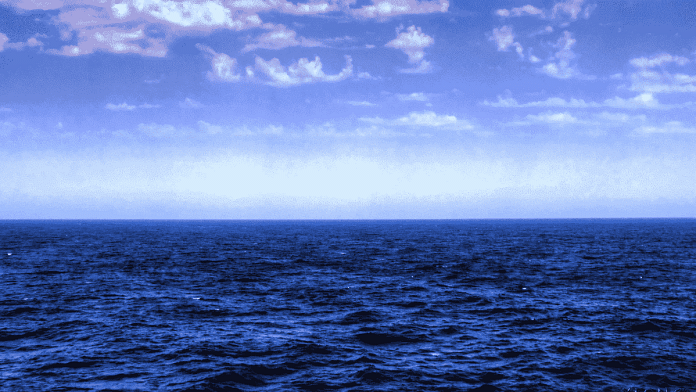New Delhi: Researchers from Bengaluru’s Indian Institute of Science (IISc) have identified the cause of an over three million square kilometres-wide ‘gravity hole’ in the Indian Ocean. Located just south of Sri Lanka, it is here that the Earth’s gravitational pull is at its weakest. As a result, the sea level is a 100 metres lower than the global average.
And now we may know how this depression came into existence. Debanjan Pal, a research scholar at IISC’s Centre for Earth Sciences, and Attreyee Ghosh, a professor at the institute, argue that this depression was caused by plumes of molten rock rising along the edges of the ancient Tethys Ocean bed as it sank into the Earth’s mantle. The gravity hole — though it’s more of a depression — was developed around 20 million years ago.
Their findings were published in the journal Geophysical Research Letters in May.
The research is significant, because while previous studies have looked into why this low gravitational pull area came into existence and were mostly focussed on understanding the present day anomaly, they did not look into how it came into being.
Also Read: Earth’s inner core now spinning slower than planet? Curious change of gear ‘every 60-70 yrs’
How Indian Ocean geoid low came into being
The Earth is not a true sphere — it’s flatter on both poles and bulges along the equator. As a result of this and other factors such as the mass of its crust, the gravitational pull varies. A map of the Earth’s gravity resembles a geoid, and this particular depression in the geoid is called the Indian Ocean geoid low or IOGL. Scientists from IISc are calling this region “the lowest geoid anomaly on Earth”, due to a lack of mass under it.
“These plumes, along with the mantle structure in the vicinity of the geoid low, are responsible for the formation of this negative geoid anomaly,” the scientists wrote in their study.
For their research, the scientists used 19 mantle convection computer models from the Mesozoic era to the present day to understand the connection between the incidents in the two periods. Mantle convection refers to the movement caused within the Earth’s mantle, or the middle layer, where hotter and lighter material rises to the top, and cooler and denser material sinks due to gravity.
Through these models, which replicate tectonic plate movements from the last 140 million years, researchers found that “low density anomalies”, or the existence of lighter elements in the upper to mid-mantle under the IOGL, were the cause of low gravity in this area.
How did these low density anomalies come into existence? Sometimes, low density anomalies can be caused by mantle plumes, or the rising up of unusually heated rock inside the Earth’s mantle, but this wasn’t the case under the IOGL.
Here, researchers found hot material originating from the African superplume — a large section of the Earth’s mantle that carries heat from near the core up to the crust — was being deflected eastwards, possibly due to the Indian plate’s rapid motion. This material then ended under the IOGL, according to researchers.
“A geoid low or a negative geoid anomaly would be caused by a mass deficit within the deep mantle. Our study explains this low with hotter, lighter material stretching from a depth of 300 km up to 900 km in the northern Indian Ocean, most likely stemming from the African superplume,” one of the authors of the study, Attreyee Ghosh, said in a statement.
(Edited by Uttara Ramaswamy)
Also Read: Where did the Earth’s oxygen come from? US Study points to an unexpected source



